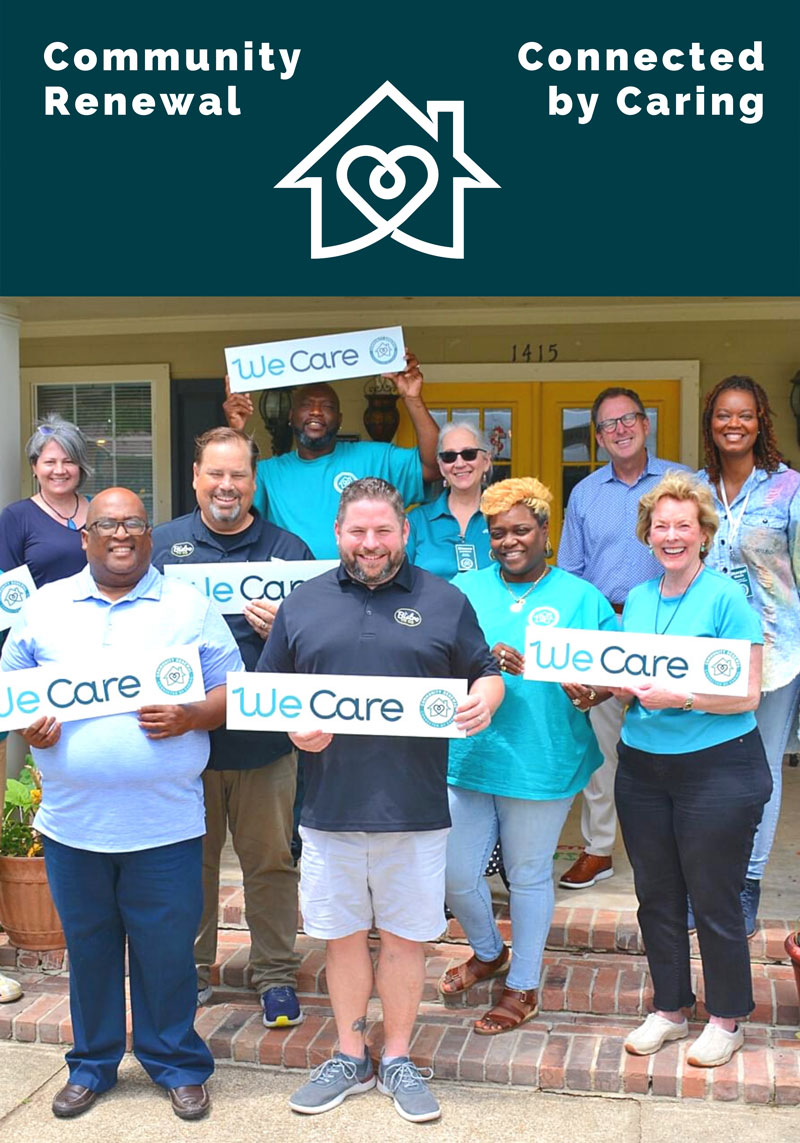Sometimes it’s difficult to measure the success of what we do at Community Renewal. After an incident in Allendale, Emmitt Welch, Community Coordinator Allendale Youth, was able to see how effective our program is to those who are impacted the most by it.
Three weeks ago, Emmitt was away from the Friendship House when a fight broke out at the playground next door. The nine girls involved all attend the after-school program at the Friendship House. By the time Emmitt came home to see what was going on, the incident was already over. After one of the Club members showed him the cell phone footage of the fight, all those involved were suspended from Club until further notice. Out of the nine girls involved though, three were voted back to Club, the victim, who was being bullied, and two girls that were not part of the fight, just bystanders. The other six, who are sisters, were still suspended.
A couple weeks after the fight, the mother of the seven girls came to the Friendship House with tears in her eyes begging Emmitt to let her girls back in Club. She told him that her family has been lost over the last few weeks. “I worry about them all the time,” said the mother. “We can’t function without Community Renewal.” The mother did not realize how crucial this after-school program was to her daughters until it was taken away. So Emmitt required the girls to write a letter of apology and read it to the Club members in order for them to be allowed back.
The girls are all now back in Club and Emmitt is constantly reinforcing the importance of being friends and getting along, even bringing in an outside party to help get the girls on the same page. So far, all is well and the girls are behaving properly. The mother has even begun volunteering at club regularly, something almost unheard of.
This is just one of the difficult situations a Community Coordinator faces. “Do I let those that started the fight back to Club?” The answer is yes because without a quality after-school program in their lives, these girls are more likely to get involved in illegal activities. “In each of the problem areas mentioned (school achievement, drugs, pregnancy, delinquency, suicide, mental health), there are successful programs. Some interventions do work. Children who start off with certain disadvantages do achieve in school, do not abuse drugs, are not delinquent… (Dryfoos, “Adolescents at Risk: Prevalence and Prevention”). It is difficult to measure success with the work that we do, but allowing these girls back into Club gives them a better opportunity of reaching their highest potential. Because without it, like their mother said, “they are lost.”
If only one of these girls is lost, dropping out of school, possibly abusing alcohol or drugs, and becoming involved in the criminal justice system, the cost to the state and society over her lifetime is somewhere between 1.7-2.3 million dollars (Cohen, “The Monetary Value of Saving a High-Risk Youth“).
Dryfoos, J. (1990). Adolescents at Risk: Prevalence and Prevention. Retrieved September 14, 2015.
Cohen, M. (1998). The Monetary Value of Saving a High-Risk Youth. Journal of Quantitative Criminology, 14(1), 5-33. Retrieved September 15, 2015, from http://link.springer.com/article/10.1023/A:1023092324459



